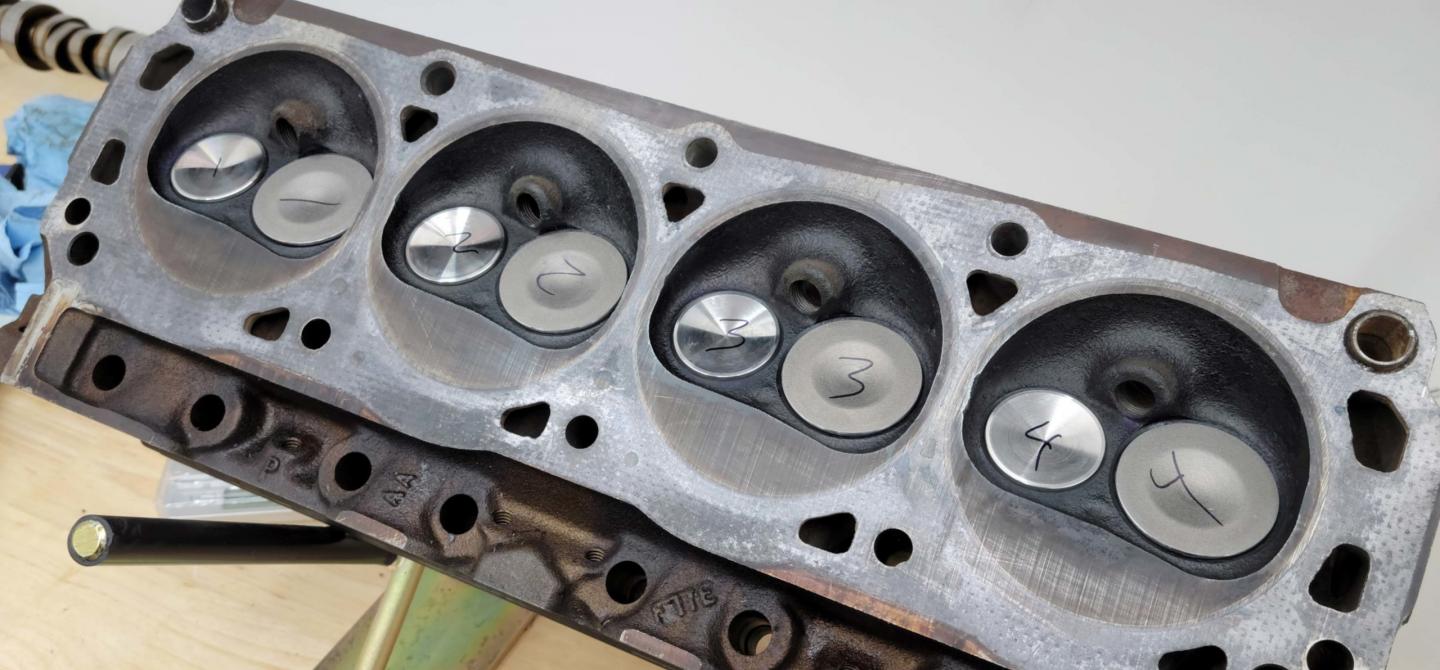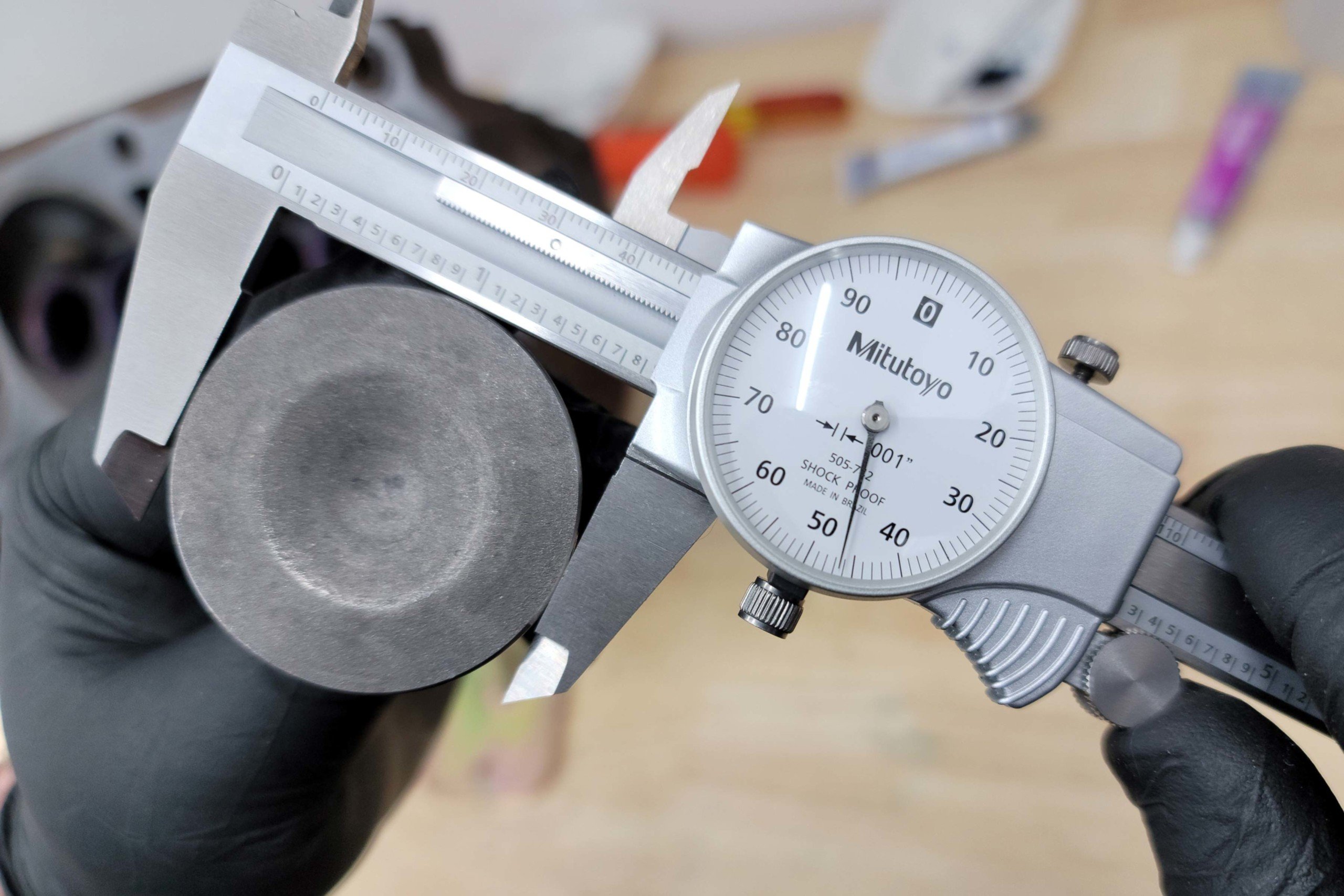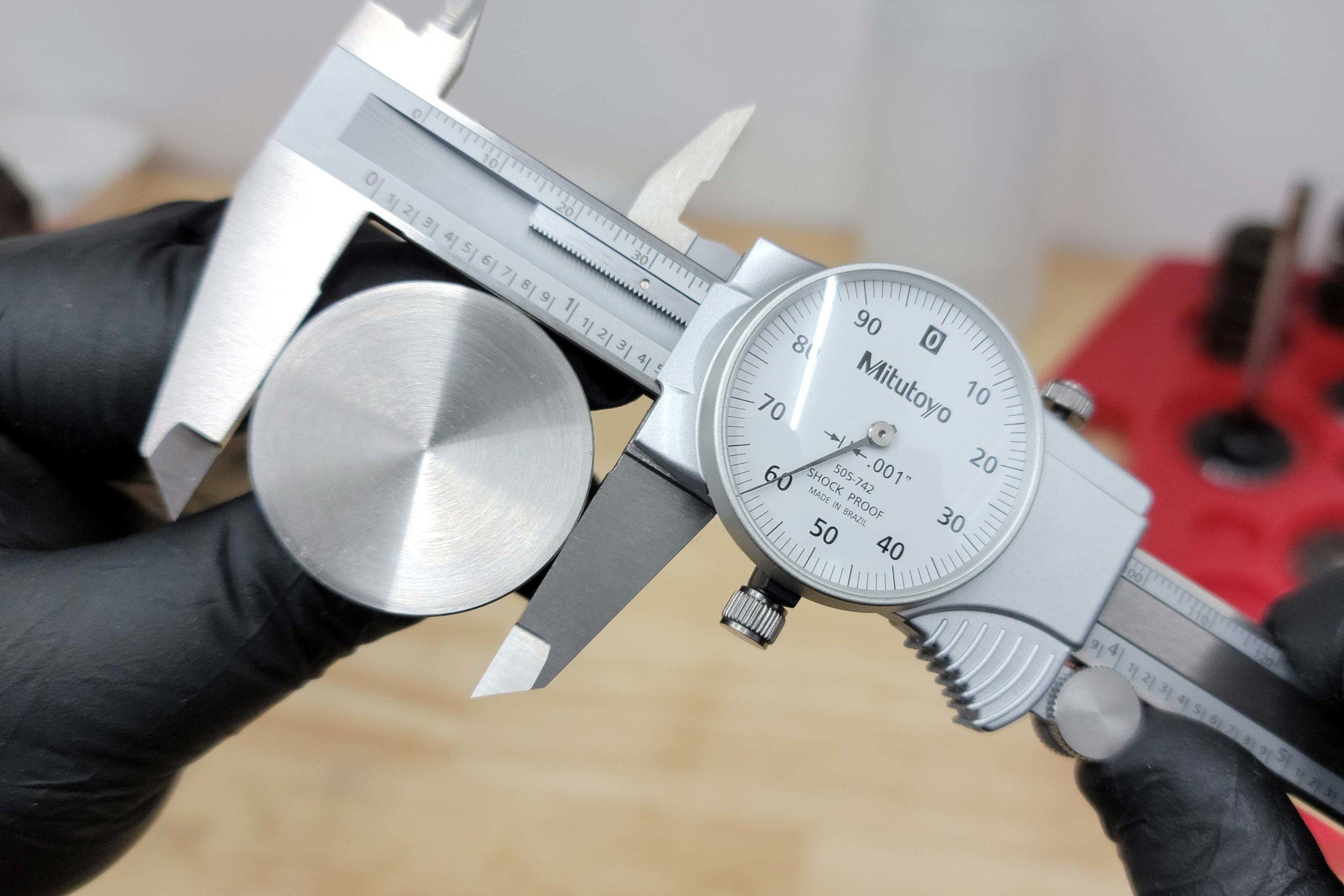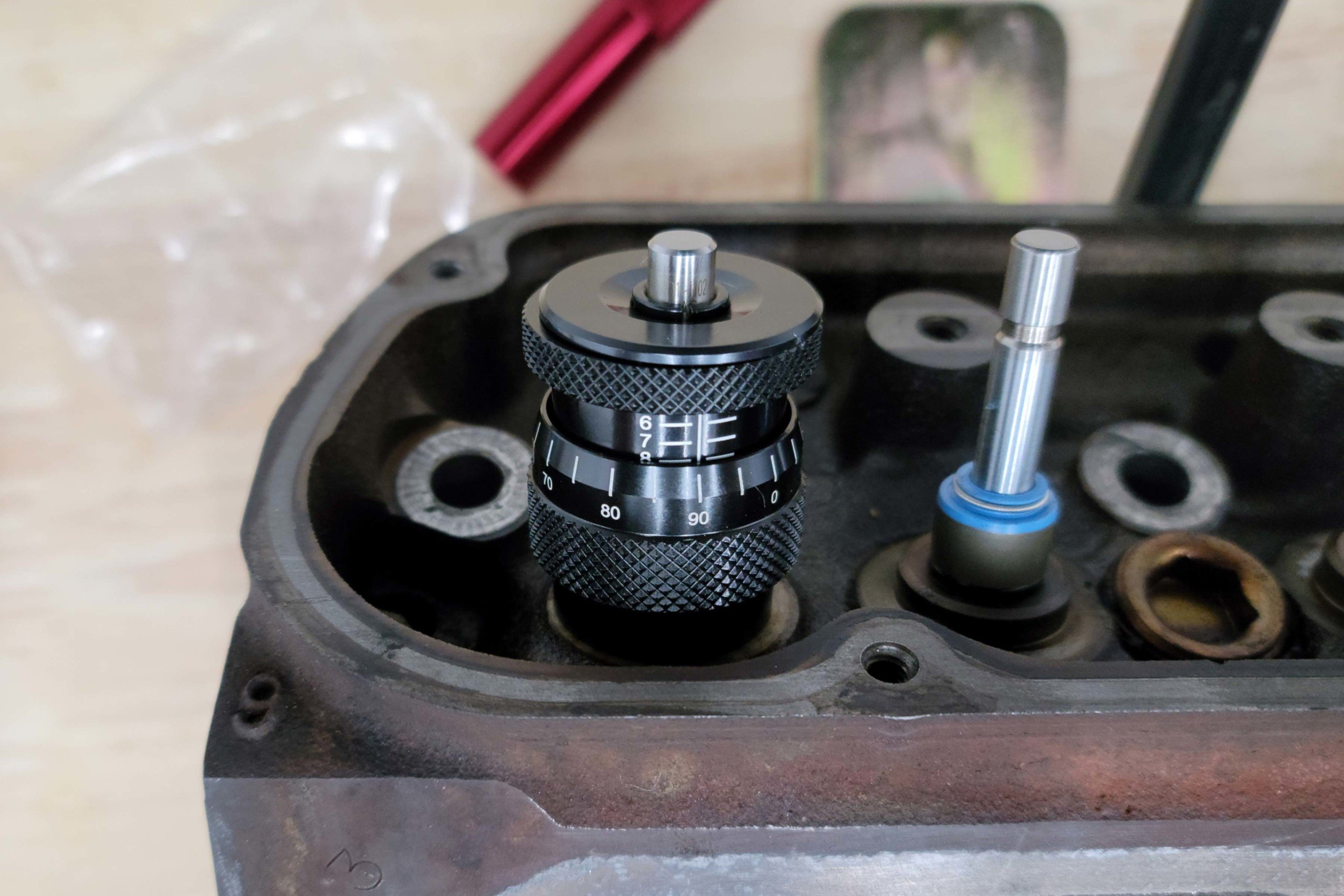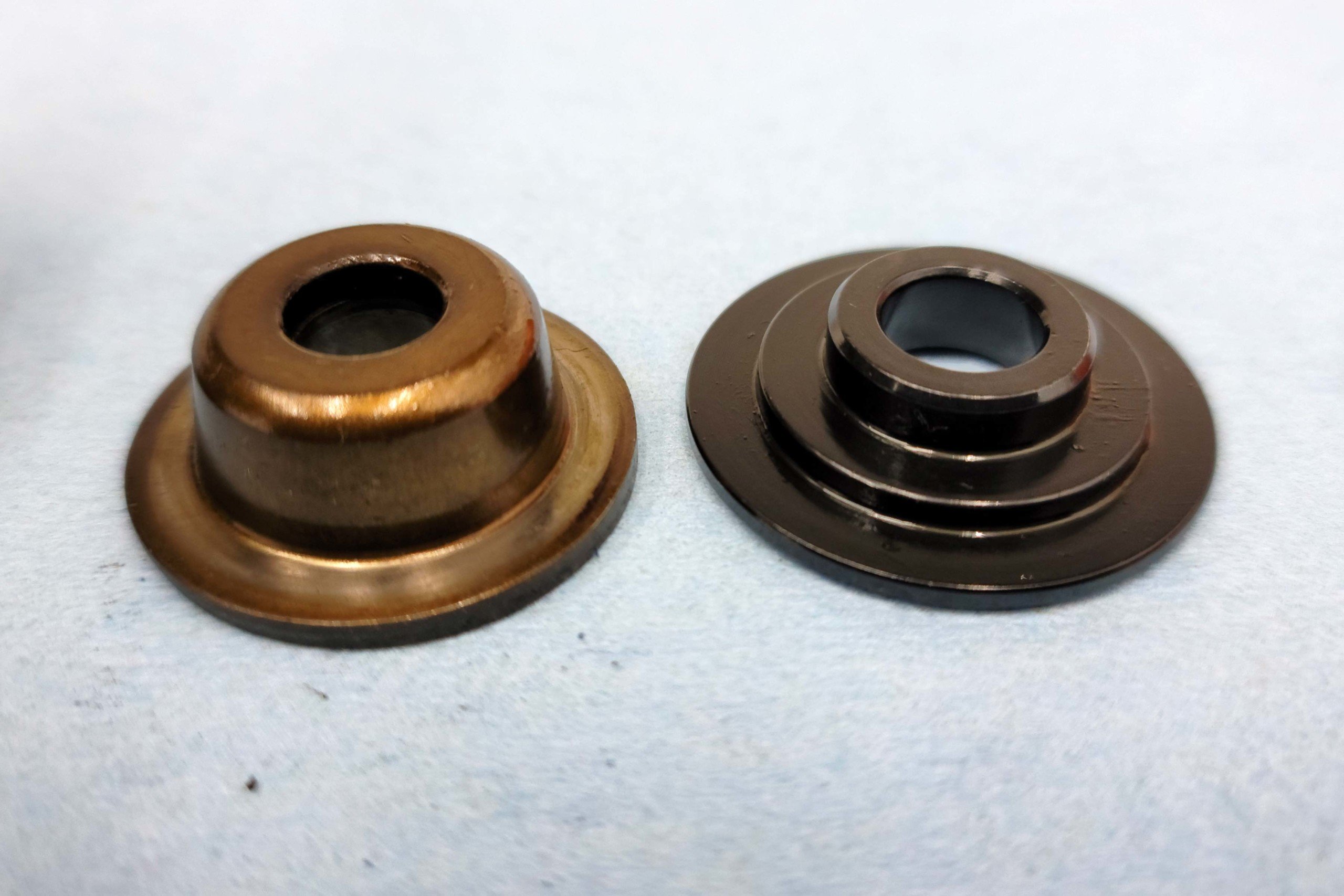Let’s face the facts: None of us is getting any younger. As the hands of time march on, the engines we all love are getting older by the minute. While it might be hard to wrap our heads around, the Ford Windsor engine hasn’t been produced in 20 years, which means the absolute newest original parts for it will be at least two decades old. In the case of our GT40P cylinder heads, the date code on the castings says they were made Tuesday, August 12th, 1997 — the day before the very first episode of South Park aired — making them 24 years old at the time of this writing.
While the aftermarket is continually extending the life cycle of our favorite engines, sometimes nothing beats the original parts, whether it’s for personal or performance reasons. Thankfully, we have companies like Engine Pro, who makes everything for the cylinder heads but the original casting itself. Whether we want to go with an all-stock restoration or rebuild the heads for some period-correct performance upgrades, the Engine Pro catalog has everything we need to get the job done.
Refreshing Cylinder Heads At Home
Generally, when you think of refreshing a set of cylinder heads, you probably think of a trip to the machine shop and a hefty bill. However, with a few specialty tools, there really isn’t much you can’t do yourself at your home workbench. If you are starting with a cylinder head core in good shape — a solid undamaged deck surface, tight valve guides, and relatively undamaged valve seats — a full refresh is an easy and economical process.

Probably the most critical tool in working on cylinder heads is a good valve spring compressor. While we’re using our ProForm heavy-duty compressor, if you don’t have one and can’t borrow one from a friend, you can rent a valvespring compressor —albeit a much more basic model — from your local parts store.
Don’t let the “specialty tool” part scare you. The only real potential hang-up would be a valvespring compressor. If you don’t have one, or know anyone who has one, there are loaners available at most local parts stores. While the free rental tools might not be as easy to use as something like the ProForm heavy-duty valvespring compressor we used, at the end of the day, you get what you pay for. The only other tools you need are a set of valve lapping sticks, Prussian Blue marking compound, and valve grinding compound.
Getting into our cylinder heads, we were able to score them from a seller on Facebook Marketplace for a great price and a four-hour drive. We’ll be using the heads on our upcoming small-block Ford project — dubbed “Retro 5.0” — and will only see mild performance upgrades in the first phase of the project. With that in mind, Dave Sutton, Product Manager for Engine Parts Group (Engine Pro’s parent company) helped guide us along in our parts selection.
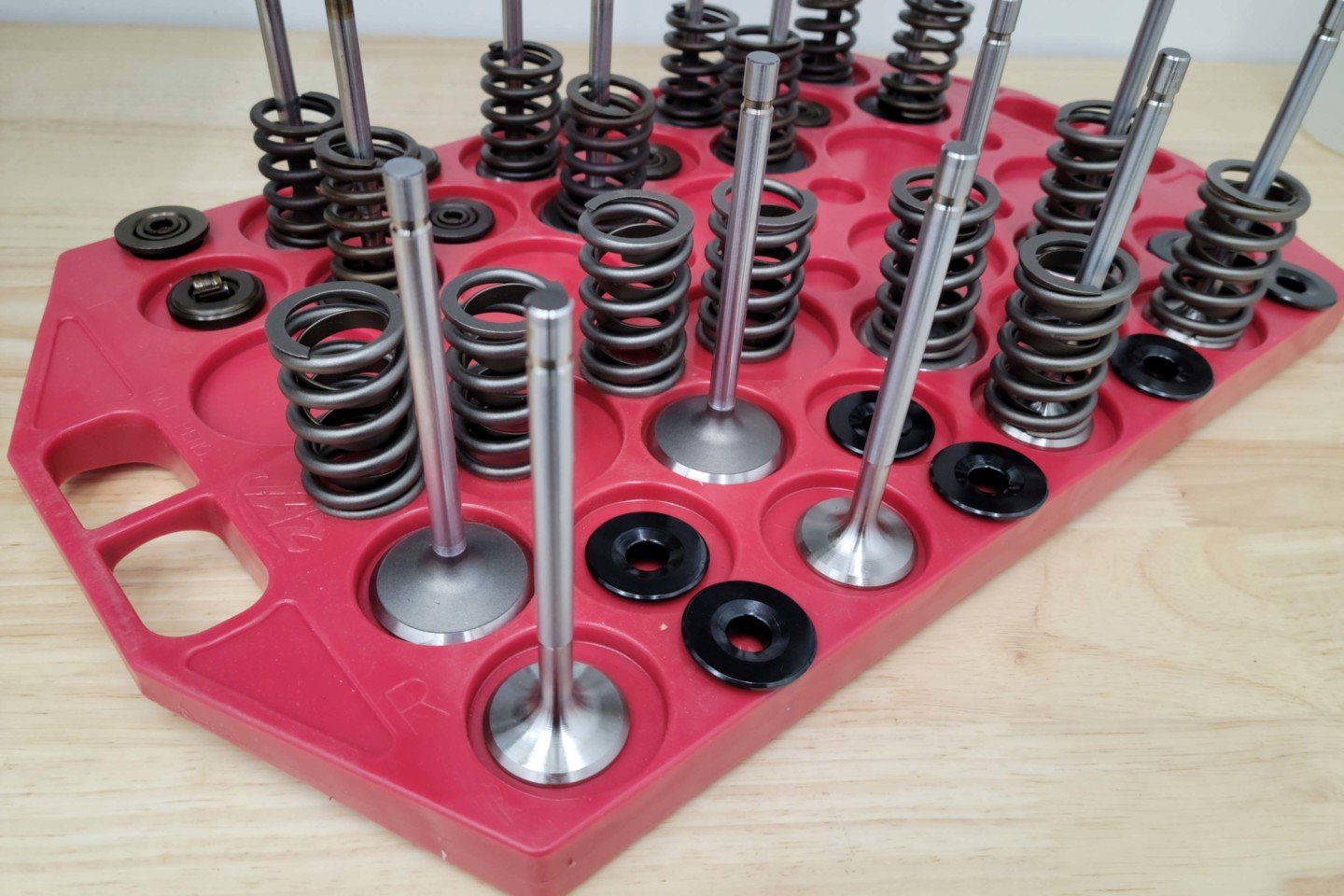
Here you can see all of the new Engine Pro valves, springs, and retainers in the foreground, with the OEM stuff in the background. Also note the undercut on the forged stainless steel exhaust valve, which will help improve flow.
E7 vs. GT40 vs GT40P
When looking for OEM 5.0 H.O. cylinder heads, there are three performance options beyond the basic E7 heads: The Cobra/Lightning GT40s (P/N: F3ZE or F4ZE) which came on 1993-1995 Cobras and Lightnings; the Explorer GT40s (P/N: F1ZE-AA) which came on 1996 to mid-1997 Ford Explorers and Mercury Mountaineers; and the GT40P (P/N: F7TE-AA) which came on mid-1997-up Explorers and Mountaineers.
Each variation had a different combination of intake and exhaust valves, as well as combustion chamber sizes. The Cobra GT40s had a nominal chamber size of 61cc, with a 1.84-inch intake valve and a 1.54-inch exhaust valve. The Explorer GT40s had the same valve sizes but with a larger 65cc compression chamber. The GT40P heads have the same intake valve as the other GT40 cylinder heads, but the smaller 1.46-inch exhaust valve found on the standard E7 heads, but makes up for it with a little more compression, thanks to the smaller 59cc chamber.
On the left is our 1.846-inch GT40 intake valve, which is the same intake valve as is used on the 351 Windsor. On the right is the 1.460-inch exhaust valve, which is the same as a standard E7 exhaust valve.
Starting With Valves
For our purposes, we wanted to start with unmolested cylinder heads, which means stock valve sizing. While the 1.460-inch exhaust valve was no problem, we realized that with no listing in the catalog for the GT40 cylinder head, finding the intake valve would require a little bit of sleuthing on our end. When we say a little bit, we mean it, as the answer was just a few rows down in the catalog.
The GT40 family’s stock intake valve is the same as a standard 351 Windsor intake valve. Listed with a valve head diameter of 1.844 inches, 11/32-inch stem diameter, and 5.075-inch overall length, it matched the valve we pulled out of the head perfectly. Since we aren’t planning on going nuts with this cylinder head setup, Sutton recommended their OE Replacement line of valves for the intake side.
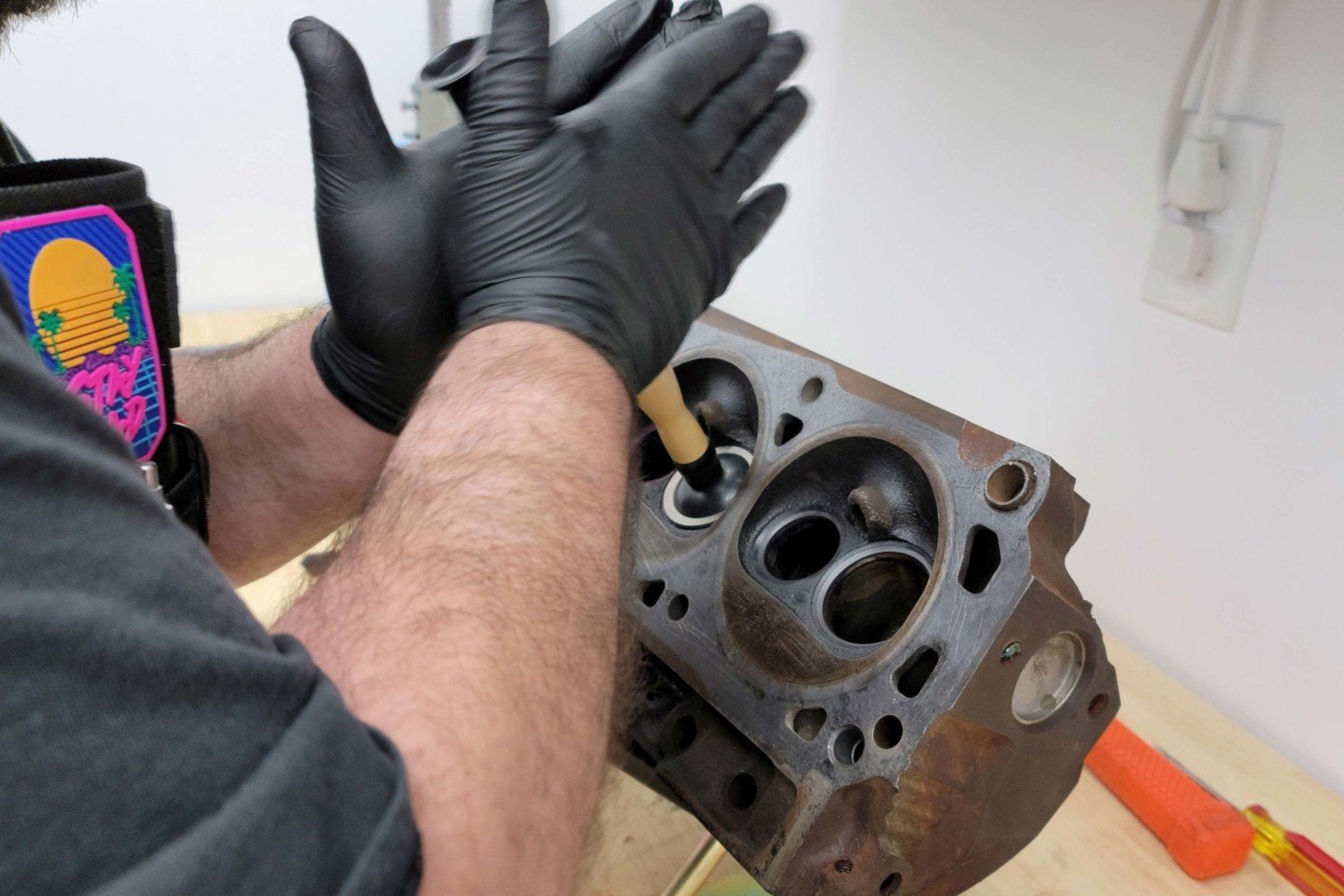
Lapping the valves is probably the hardest part of the whole process. While some people will chuck the valve stem up in a cordless drill, we prefer to do it the traditional way, spinning back and forth in both directions.
“Our OE line meets or exceeds original manufacturer’s specifications and is geared towards the stock or mild engine builds,” Sutton explains. “The materials will vary by application. Some are stainless, some are bi-metal, some have Stellite heads, and some of our heavy-duty valves are Inconel. Most have a chromed stem, some are nitrided. The configurations we offer in the OE line are all based on O.E.M. specifications.”
For the exhaust valves, since we were using the wildly more common 1.460-inch head diameter, Sutton recommended the next step up in the performance lineup — the Street Series stainless steel valve. “The Street Series valves are all one-piece stainless-steel forgings which are fully machined with undercut stems,” explains Sutton. The valve stems are finished in hard chrome for wear resistance and have a hardened tip. So while our GT40P heads have the smaller E7 valves, the undercut stems will help offset some of that disparity from the Cobra-specific heads.

After lapping the valves, we applied Prussian Blue to the valve seat and installed the valve. The trick is to remove it without rotating it, so that you don’t smear the transfer impression.
Now, with a set of exact replacement valves, and valve seats in great condition, it was time for us to lap the valves and then check the fit. Lapping valves is a fairly simple process that involves placing an abrasive compound between the valve register and the valve seat and rotating the valve back and forth to perfectly mate the two sealing surfaces. The compound breaks down from a coarse grit to a fine grit, making it a one-step process.
Once the lapping is complete, we place the Prussian Blue onto the valve seats, and press the valve into the seat, being careful not to rotate the valve. Once the valve is removed, the pattern of contact between the two surfaces will be visible on the valve’s register, verifying complete contact around the entire circumference. Everything on our assembly passed with flying colors, and we moved onto the other side of the cylinder heads.
Valve Seals
Chances are, if you’re refreshing your cylinder heads, it’s a good idea to change out the valve seals as well. It’s cheap insurance against a future failure, when you already have everything apart. In fact, they are inexpensive enough that you should probably buy the best ones offered. Following this line of logic, Sutton sent us the most skookum seal available for our application in their catalog.
The 35-562V valve seal is a positive seal made from fluoroviton with full metal cladding and a garter spring at the neck of the seal. “The metal-clad seal is great for dual and triple springs as they allow more room inside the spring,” says Sutton. “The metal cladding also provides good holding power to the valve guides.”
The metal-clad valve seals from Engine Pro are made from fluoroviton and should hold up better over time than the narrow-banded versions.
Additionally, the steel jacket offers some protection to the seal should they ever come into contact with the spring during operation. “They also dissipate heat and don’t dry up and fall apart like some of the old materials,” Sutton offers. To install the seals, there are a lot of people who will simply fit a socket over the seal and give it a whack. As we’ve said before, and will continue to say, if the right tool is available, why not use it? So to install the Engine Pro valve seals, we used our ProForm seal installation tool, and the seals were secured to the guides with a few whacks of the deadblow.
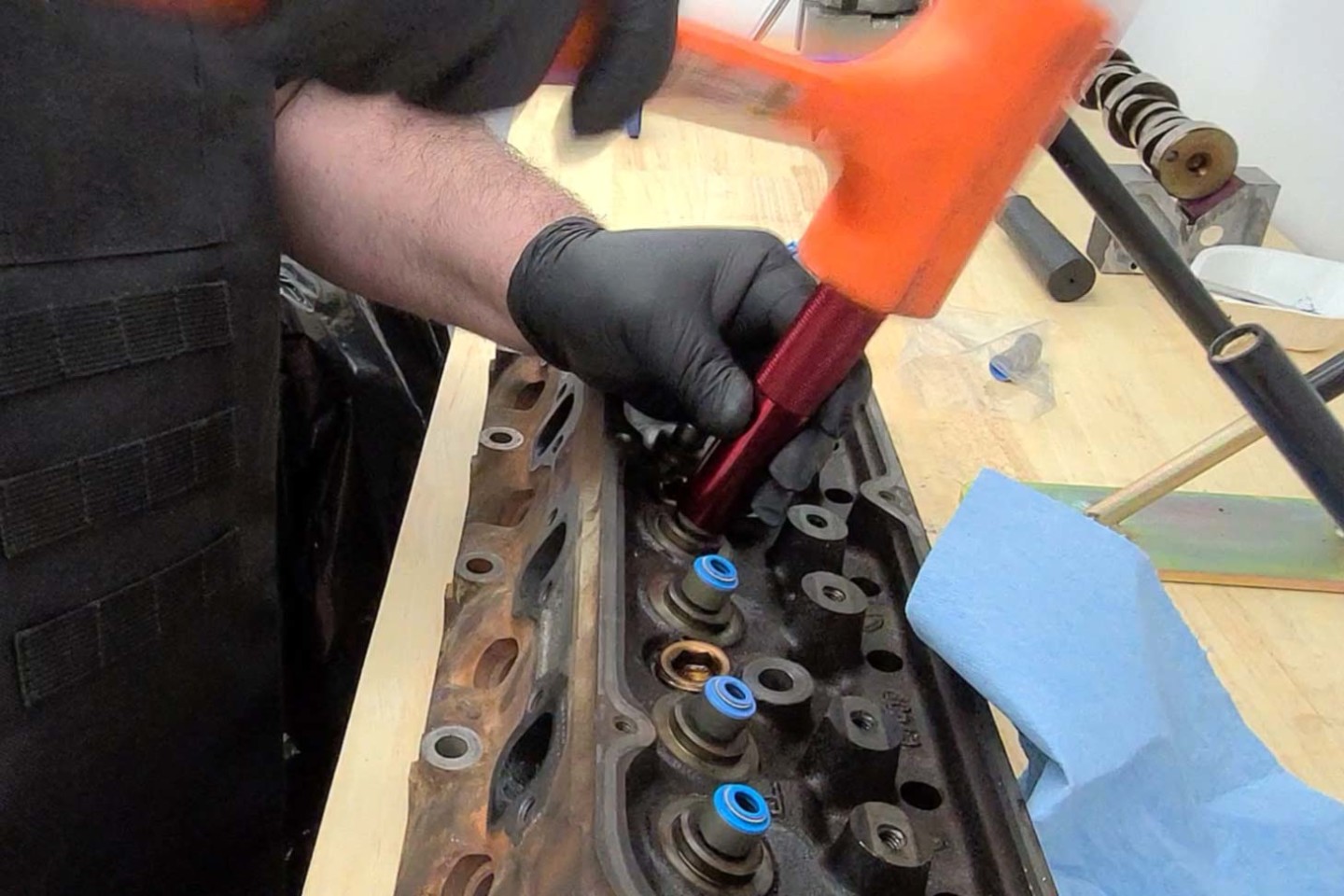
While there are plenty of valve seals out there that have been installed with sockets, we prefer using the proper valve seal installation tool. This one is made by ProForm.
Valvesprings, Retainers, and Locks
With all the hard work done (“hard” being a bit of a stretch) all that was left was to reinstall the valvesprings onto the valves. Luckily, we weren’t reusing the stock stuff, as Ford used a very ungainly retainer design. Also, even though the OEM springs were in decent condition, there is no reason to reuse 24-year-old springs, especially when we will be making some performance upgrades to the engine.
For the springs, we opted for a mild upgrade in the form of Engine Pro’s Super Clean Street/Race Valve Springs. A considerable amount of heat treating and stress relief go into the creation of the Super Clean springs, to ensure a long-lasting chrome-silicon valvespring. For our applications, we went with P/N: 02-1021-16 which is a single 1.464-inch O.D. spring with a flat-wire damper wound in it to help manage harmonics. The spring offers 129 pounds of force on the seat, with 305 pounds of open pressure at the maximum lift of .550 inch, which is a solid bit of improvement over the stock valvespring.
Here you can see the difference between the OEM spring on the left and the new high-performance Engine Pro spring on the right. designed for an installed height of 1.800, you can see that the intake installed height measures 1.810 inches and the exhaust comes in at 1.790 inches.
For the retainers, we kept it simple, opting for Engine Pro’s basic chromoly steel 7-degree retainers. While Engine Pro does offer racy, lightweight 10-degree Titanium retainers, they would be overkill in this application. Even though they are made out of 4140 steel which is known for its strength as opposed to being svelte, the modern steel retainers still shaved between 8 and 10 grams of weight from the OEM pieces.
“Retainer weight is not all that critical unless we’re talking high RPMs. That being said, most OEM retainers from days-gone-by are a bit heavier than the machined aftermarket pieces like our Engine Pro retainers,” explains Sutton. Complementing the retainers is a set of Engine Pro’s Nitro Black 7-degree locks. CNC-machined out of 1144 Stress Proof alloy steel, the Nitro Black valve locks are both strong and accurate, dimensionally.
Reassembling the heads with the new valvetrain components has taken our 24-year-old cylinder heads and made them better than new. Now, they are ready to be put to the test on the dyno once our small-block Ford project engine is up and running.
Looking at the difference in OEM retainer design on the left and the Engine Pro 4140 steel retainer on the right, it's pretty obvious why the Engine Pro retainer weighs less.


